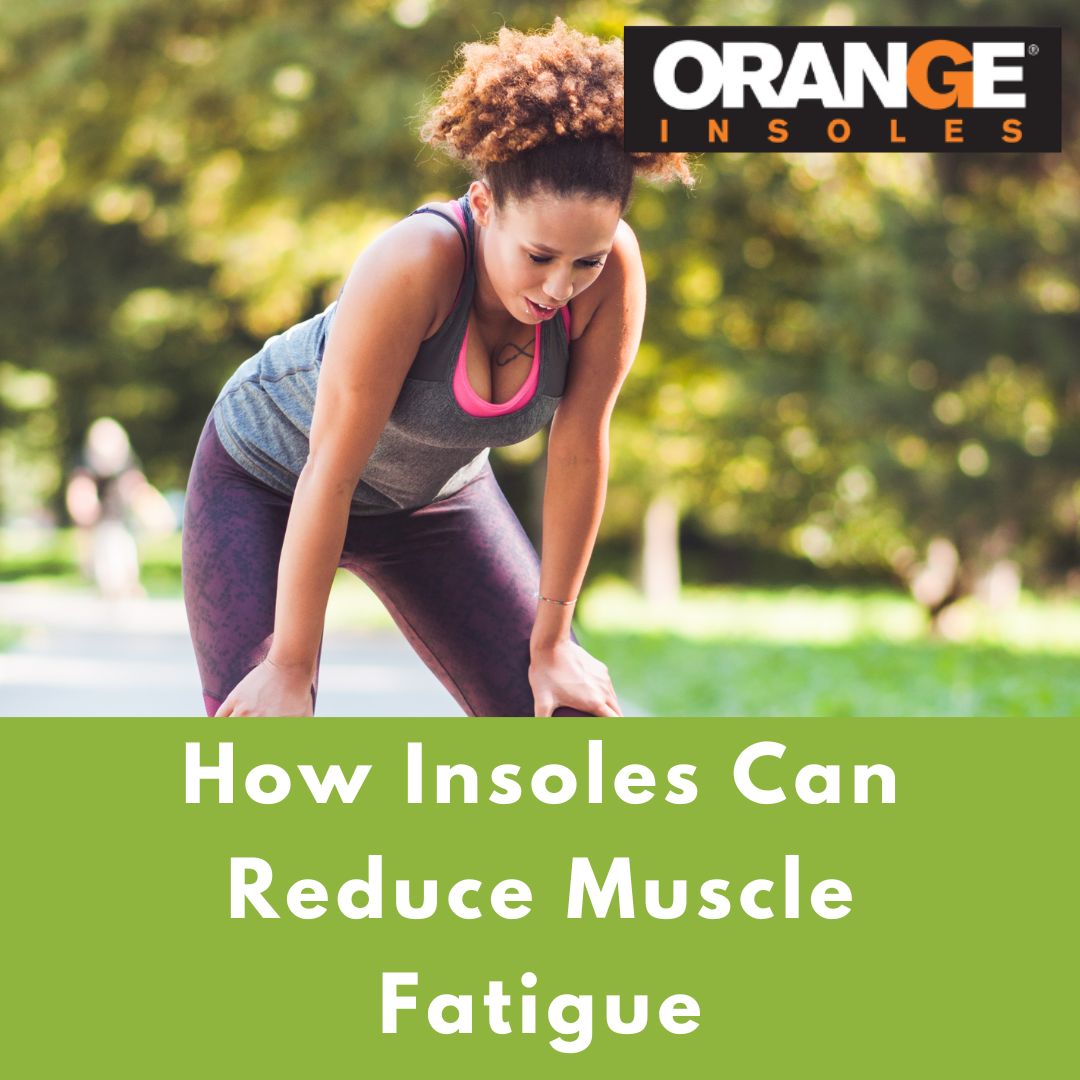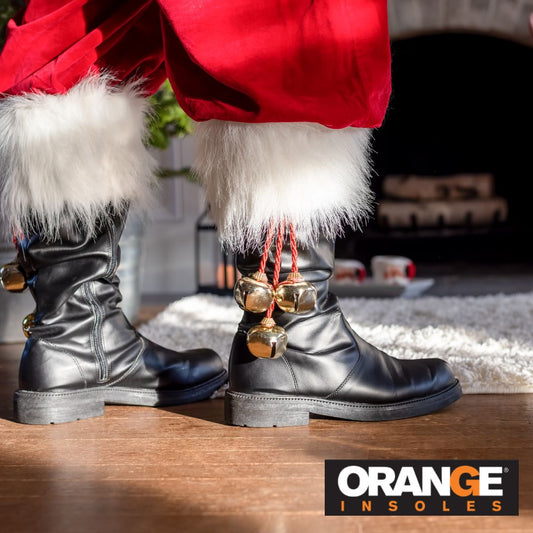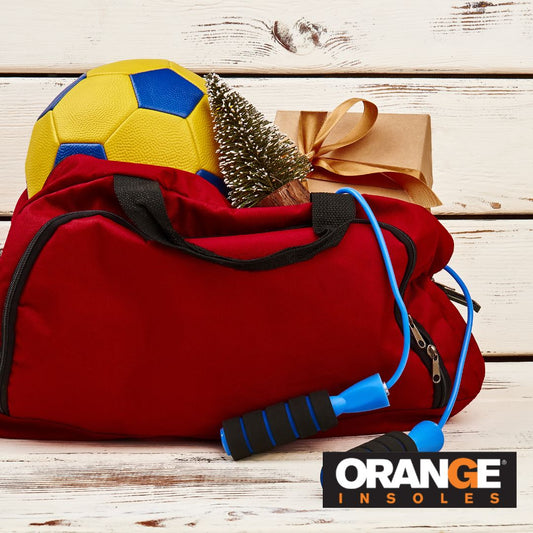Whether you’re a nurse, a retail worker, or just someone who is always out and about, insoles can help prevent muscle fatigue at the end of a long day so you can feel better and do more. In this blog, we'll explore three ways that insoles can provide support and cushioning to your feet, helping to reduce the strain on your muscles and joints.
Insoles Absorb Impact
Walking or standing for long periods of time can cause your feet to become fatigued due to repeated impact and pressure. Insoles can absorb some of this impact, reducing the stress on your feet and lower limbs. Orange Insoles feature a deep heel cup, a feature unique to our insoles, that pulls the fatty tissue around your heel underneath it and provides natural shock absorption.
This shock absorption reduces the workload on the muscles and joints in your lower limbs, which can help to prevent muscle fatigue and soreness.
If you think of the muscles in your legs, from your feet all the way to your hip, like guitar strings that vibrate like they are being plucked every time you take a step, you have to assume that eventually, those strings would wear out. You have to replace guitar strings every so often, right? Well, since you can’t replace your muscles, insoles can help reduce some of that vibration and absorb the impact that is making your muscles vibrate. That way, they aren’t as tired after a long day of playing or working.
Insoles Distribute Weight Evenly
If our bodies are out of alignment we may tend to favor one side or the other or make some muscles work harder than others. This might be caused by our posture, the way we walk, or other variables like uneven surfaces or other factors out of our control. When we favor some muscles over others, the muscles that are overworked can easily become fatigued. Then, when we try to work the underworked muscles, those will get tired as well.
By distributing your weight more evenly across your feet, insoles can reduce the strain on certain muscles and joints when walking or standing. By reducing the workload of those muscles, insoles can help prevent fatigue and soreness.
The thermo-plastic insert in our insoles helps with alignment and provides comfort by distributing your body’s weight more evenly across the heel, forefoot, and arch.
It does this by providing lift & separation that spreads out the weight more effectively than other insoles.
Insoles Provide Arch Support
If you have a low or no arch in your foot, or if you have high arches, you might experience muscle soreness in your feet and legs. Insoles with arch support, like Orange Insoles, can help to correct the alignment of your feet and reduce the stress on your lower limbs. This can help to prevent muscle imbalances and overuse injuries that can lead to soreness and fatigue.
Arch support can also help with sore muscles by reducing the strain on the plantar fascia, a band of tissue that runs along the bottom of the foot and is responsible for supporting the arch of the foot. When the plantar fascia is overworked or stressed, it can become inflamed, leading to a condition called plantar fasciitis, which can cause significant pain and discomfort.
The addition of arch support can reduce the load on the plantar fascia and correct any underlying biomechanical problems, thus alleviating muscle soreness and preventing plantar fasciitis from developing.
If you’re still curious about the inner workings of an insole, you can see the breakdown on our website and learn more about how the 4 layers of an Orange Insole work together to keep your feet feeling fine, even after a long day.

























































